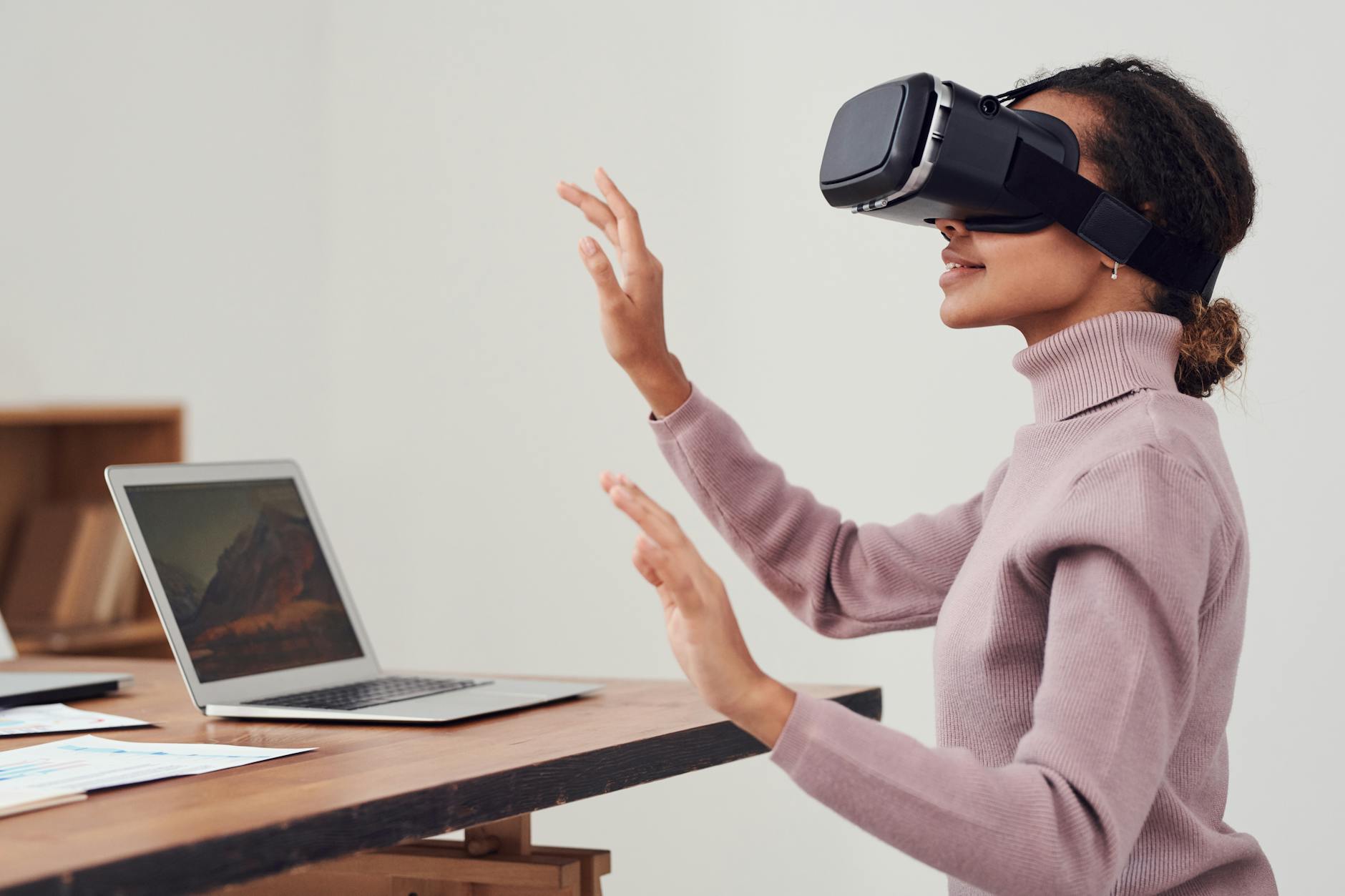The Benefits of VR in Training and Education
Virtual Reality (VR) technology is revolutionizing the fields of training and education. By creating immersive and interactive environments, VR is transforming how learners absorb information and acquire skills. The benefits of VR in these domains are vast, offering unprecedented opportunities for engagement, retention, and real-world application (https://mazerspace.com/benefits-of-virtual-reality-in-training-and-education/).

Enhancing Engagement and Motivation
One of the primary benefits of VR in training and education is its ability to significantly enhance engagement and motivation among learners. Traditional learning methods often struggle to capture the attention of students, leading to disengagement and poor retention of information. VR, however, creates an immersive learning environment that captivates learners by making them active participants in their education.
In a VR classroom, students can explore historical sites, interact with three-dimensional models, and engage in virtual labs, making abstract concepts tangible and easier to understand. This level of engagement is not only more enjoyable but also fosters a deeper connection with the material, which enhances motivation and drives curiosity.
Improving Knowledge Retention
Another critical advantage of VR in education and training is its impact on knowledge retention. Studies have shown that interactive and experiential learning significantly improves memory retention compared to passive learning methods. VR provides a hands-on experience where learners can practice skills and apply knowledge in a simulated environment, reinforcing what they have learned.
For instance, medical students can use VR to simulate surgeries, allowing them to practice procedures without the risk of harming a patient. This experiential learning approach helps solidify their knowledge and skills, making them more confident and competent in real-world situations.
Providing Safe Learning Environments
Safety is a crucial concern in many training scenarios, particularly in fields like healthcare, aviation, and industrial operations. VR offers a solution by providing a safe and controlled environment where learners can practice high-risk tasks without real-world consequences. Trainees can make mistakes and learn from them without any danger, which is essential for building competence and confidence.
In addition to safety, VR allows for the repetition of scenarios that might be rare or dangerous to practice in real life. This repeated exposure helps learners build muscle memory and improve their performance, ultimately leading to better outcomes in their respective fields.
Facilitating Remote Learning
The rise of remote learning has highlighted the need for effective distance education tools, and VR has proven to be a valuable asset in this regard. VR can bridge the gap between physical presence and virtual learning by creating a sense of presence and interaction that is often missing in traditional online education.
Students and trainers can collaborate in a virtual space, participate in group activities, and engage in real-time discussions, mimicking the dynamics of a physical classroom. This capability is especially beneficial for learners who may be geographically dispersed or unable to attend in-person classes due to various constraints.
Customizing Learning Experiences
VR technology allows for highly customizable learning experiences tailored to individual needs and learning styles. Educators and trainers can design VR scenarios that address specific skills and competencies, providing targeted training that meets the unique requirements of each learner.
For example, language learners can immerse themselves in a virtual environment where they interact with native speakers, enhancing their conversational skills in a realistic context. Similarly, corporate training programs can use VR to simulate customer interactions, enabling employees to practice and refine their communication and problem-solving skills.
Encouraging Collaborative Learning
Collaboration is a vital component of effective learning, and VR facilitates this by creating interactive and collaborative virtual environments. Learners can work together on projects, solve problems, and engage in discussions, all within a shared virtual space. This collaborative aspect of VR promotes teamwork and communication skills, which are essential in both educational and professional settings.
Moreover, VR can bring together learners from diverse backgrounds and locations, fostering a global learning community. This exposure to different perspectives and cultures enriches the learning experience and prepares students for the interconnected world they will navigate in their careers.
Conclusion
The benefits of VR in training and education are profound, offering enhanced engagement, improved retention, safe learning environments, and personalized experiences. As VR technology continues to advance, its integration into educational and training programs will likely become more prevalent, driving innovation and improving outcomes across various fields. Embracing VR in education not only enriches the learning experience but also prepares learners for the complexities of the modern world, making it an invaluable tool for future generations - https://mazerspace.com/evidence-for-the-effectiveness-of-vr-training/.
Post a Comment